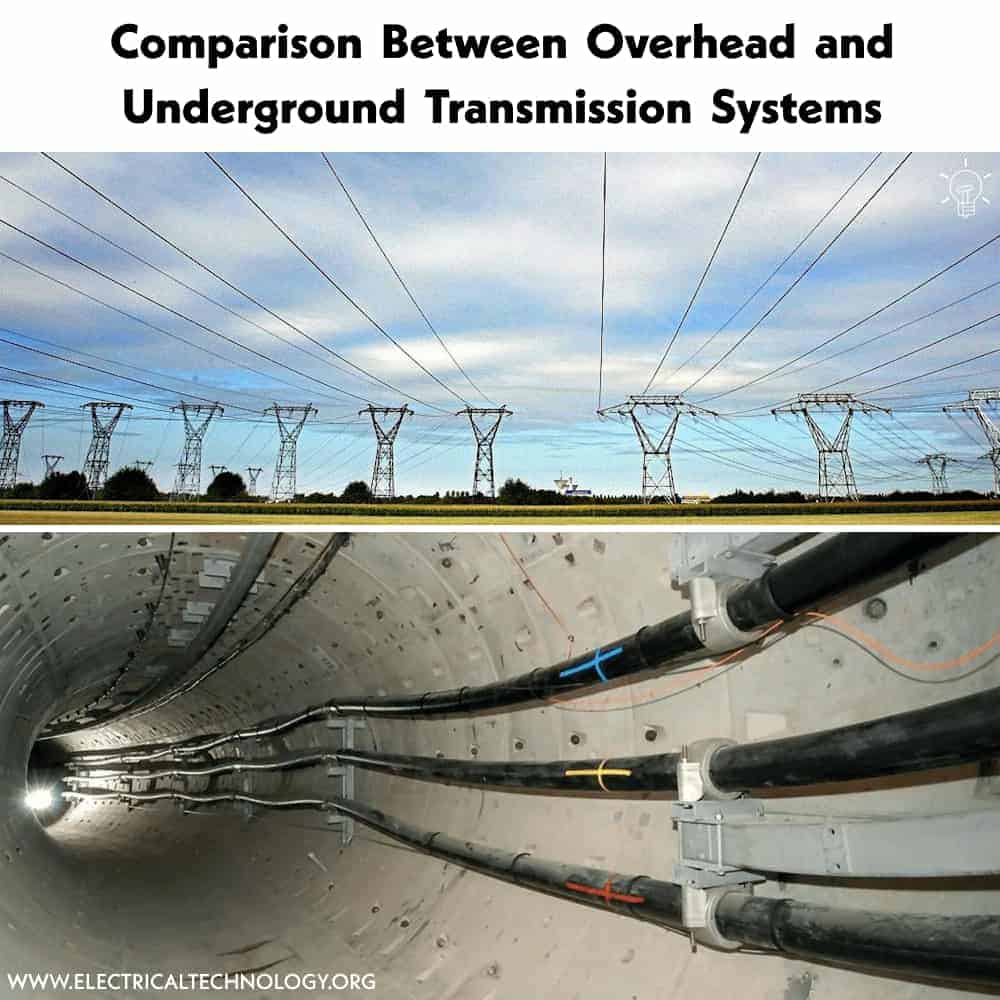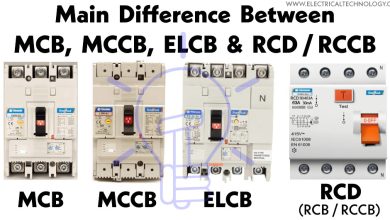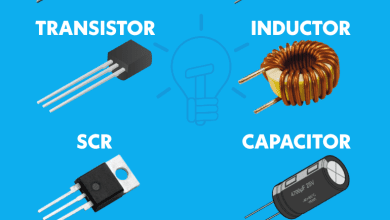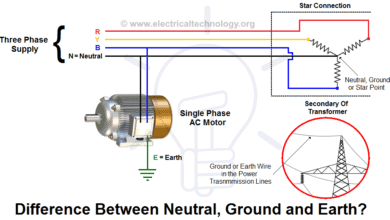Comparison Between Overhead & Underground Transmission Systems
Comparison Between & Advantages of Overhead and Underground Transmission Systems
Following are the main differences and comparison between underground and overhead power transmission and distribution in a typical power system.
Public Safety
In terms of public safety, an underground system is safer than an overhead transmission system because all the components and devices used in transmission and distribution are managed underground, minimizing concerns about any kind of obstacle and interference. Additionally, the environmental impact (wind, storms, and heavy rain) is less on the underground system compared to the overhead power transmission system. Therefore, the underground system is more secure.
Initial Cost
The underground system is relatively more expensive than the overhead system due to excavation, conduits, cables, manholes and other special equipment for transmission and distribution. The initial cost of underground system is five to ten times higher than the overhead system.
Flexibility
The overhead system is more flexible than the underground system, i.e. the need of modification in the overhead system can be easily changed accordingly.
In the underground system, manholes and duct lines are constructed permanently. When the load is increased or need a modification in the system, there is a need for additional duct lines. Thus, the flexibility for making changes in the underground works is very low. However, in the overhead transmission and distribution system, the wires, poles, and power and distribution transformers are easily accessible and can be replaced or changed according to the new or future load requirements.
Faults
The risk of faults in the underground system is very low because all the cables are laid underground, generally providing better insulation. In the overhead system, there are higher chances of faults in power system and external accidents due to environmental (seasonal and harsh weather) effects.
Fault Location and Repair
In general, faults or malfunctions in underground systems are very rare. If a fault occurs, it is challenging to find and repair due to the cables being buried. In contrast, in overhead transmission systems, the conductors are exposed and easily accessible, making fault finding and repair extremely easy.
Current Carrying Capacity & Voltage Drop
An overhead system is capable of carrying significantly more current than an underground system with the same conductor material and area.
The underground system is used for less than 150 kV, while overhead transmission can be used for extra high voltage (EHV and UHV) power transmission, ranging from 380 kV to 800 kV and beyond.
The inductive reactance in an underground system is lower than in an overhead system because the underground cables are very close to each other. On the other hand, the capacitive reactance in an underground system is higher, leading to an increase in charging current.
For this reason, aside from overhead systems, an underground system is not a good choice for very long-distance power transmission.
Interference with Communication Circuits
The overhead system introduces interference in the telephone lines, resulting in an undesirable increase in the electric potential of the communication lines and noise in the communication system. However, there is no possibility of such communication issues in the underground system.
Maintenance Cost
Due to the reduced risk of wind, snow, and lightning in the underground system, the cost of repair is much lower compared to the overhead system. However, if a fault occurs, the time and cost required for repair are also high. On the other hand, while the probability of fault occurrence in the overhead system (O/H) is high, the maintenance and repair are quick with less time and cost.
Appearance
In the underground system, as all the wires are buried (installed and managed undergrounds), the beauty of the area remains intact, with no interference with the surrounding buildings. Thus, the underground system appears visually more attractive and aesthetically pleasing compared to the power lines in overhead transmission and distribution systems.
Useful Life
The life expectancy of underground system is almost double than the overhead system. If the useful life of an overhead system is 25 years, the age of the underground will be approximately 50 years.
Compression between Underground Cables and Overhead Lines
| Underground Cables | Overhead Lines |
| Protected from storms and lightning | Unprotected from wind, birds, and lightning |
| Faults are frequent | Relatively few faults occur |
| Fault detection is difficult | The fault is easily traced |
| Fault finding and repair costs are high | Repair costs are relatively low |
| Risk of public accidents is low | Risk of public accidents exists |
| Installation and laying cables are difficult | They are easier to install |
| The cost of laying cables is very high | The installation is less costly |
| Appears visually more attractive and aesthetically pleasing | The visual appearance is not pleasing |
| Do not interfere with communication cables | Interference with communication lines |
| There is no problem of crossing the road | The crossing problem occurs |
| Low Inductive Voltage drop | High voltage drop |
| Not suitable to be used for long distances | They can be used for even longer distances |
| Preferred to use in densely populated areas | Not recommended to use in densely populated areas |
| Reliable and strong | Strong and reliable |
| Less space is required to accommodate the same level of transmission voltage | Requires more space due to supporting structures and lines |
| Low current carrying capacity | Current carrying capacity is relatively high |
| Low inductive reactance | High inductive reactance |
| High capacitive reactance | Low capacitive reactance |
| Useful life expectancy is longer | Useful life is comparably low |
| Difficult to draw tapings | Tapings can be easily drawn |
| Due to excessive voltage drop, they are relatively less preferred for voltage regulation | Due to the close proximity of cable conductors, it results in lower inductive drop, making the cable preferable for voltage regulation in AC systems |
Advantages of Underground Power System
An underground power system offers several advantages, including:
- Enhanced Aesthetics:
- Underground systems do not disrupt the visual landscape, preserving the aesthetic appeal of the surroundings.
- Reduced Environmental Impact:
- Underground systems have a lower environmental impact as they are less susceptible to weather-related damage, reducing the risk of oil spills or other contaminants.
- Improved Safety:
- Underground systems are safer as the risk of accidents, such as electric shocks or damage due to severe weather conditions, is minimized.
- Reduced Electromagnetic Interference:
- Underground power lines generate less electromagnetic interference compared to overhead lines, making them preferable in sensitive areas.
- Minimal Electromagnetic Fields (EMF):
- Underground power systems produce lower electromagnetic fields, addressing concerns about potential health effects associated with prolonged exposure to EMF.
- Lower Vulnerability to Weather Conditions:
- Underground systems are less susceptible to weather-related disruptions, such as wind, storms, and ice accumulation on power lines.
- Enhanced Reliability:
- Underground power systems often experience fewer outages and disruptions, leading to increased reliability and continuity of service.
- Reduced Transmission Losses:
- Underground systems typically have lower transmission losses compared to overhead systems, resulting in more efficient energy distribution.
- Reduced Land Use Conflicts:
- Underground systems help avoid land use conflicts associated with the installation of overhead power lines, especially in densely populated or environmentally sensitive areas.
- Enhanced Security:
- Underground systems are less vulnerable to intentional damage or sabotage, providing an added layer of security.
- Longer Lifespan:
- Underground components generally have a longer lifespan as they are protected from external environmental factors, contributing to overall system durability.
- Minimized Right-of-Way Requirements:
- Underground power systems require less right-of-way space compared to overhead systems, reducing the impact on land use.
- Improved Resistance to Extreme Weather Events:
- Underground systems are less affected by extreme weather events like hurricanes, tornadoes, or heavy snowfall, contributing to system resilience.
- Reduced Fire Risk:
- Underground power lines reduce the risk of wildfires caused by overhead lines contacting vegetation during dry or windy conditions.
- Enhanced Urban Planning:
- Underground systems facilitate urban planning by eliminating the need for large, visually intrusive transmission structures
Advantages of Overhead Power System
An overhead power system, while having some drawbacks, also comes with several advantages:
- Lower Initial Cost:
- Overhead power systems typically have a lower initial installation cost compared to underground systems.
- Ease of Maintenance and Repair:
- Overhead power lines are more accessible, making maintenance and repairs quicker and less expensive.
- Faster Installation:
- Overhead systems can be installed more quickly than underground systems, leading to faster implementation of power infrastructure.
- Easier Identification of Faults:
- Faults in overhead power lines are often more visible and easier to identify, facilitating quicker response times for repairs.
- Flexibility in System Expansion:
- Overhead systems offer greater flexibility for system expansion or modification without the need for extensive excavation work.
- Ease of Inspection:
- Overhead lines are easier to inspect visually, allowing for regular checks and early detection of potential issues.
- Higher Ampacity:
- Overhead conductors can generally carry higher current loads, making them suitable for transmitting larger amounts of power.
- Less Heat Retention:
- Overhead lines dissipate heat more efficiently than underground cables, reducing the risk of overheating.
- Proven Technology:
- Overhead power systems have been in use for a long time and have a proven track record of reliability and performance.
- Reduced Risk of Moisture Damage:
- Overhead systems are less susceptible to damage from moisture, which can affect the insulation of underground cables.
- Lower Installation Complexity:
- The installation of overhead power lines is generally less complex than underground systems, requiring fewer specialized components.
- Quick Response to Repairs:
- In the event of a fault, overhead systems allow for faster response times, minimizing downtime and service interruptions.
- Easier Replacement of Components:
- Components in overhead systems, such as insulators and conductors, are easier to replace when needed.
- Longer Spans and Greater Clearance:
- Overhead systems can cover longer distances between support structures, reducing the need for intermediate supports and providing greater clearance.
-
Adaptability to Varied Terrain:
- Overhead power lines can be adapted to various terrains and landscapes more easily than underground systems.
Related Posts:
- Difference between AC and DC Transmission System & Power Lines
- Differences Between HVAC and HVDC – Power Transmission
- Advantages of HVDC over HVAC Power Transmission
- Advantages & Disadvantages of 50 Hz and 60 Hz Frequency Power Supply
- Difference Between 50 Hz and 60 Hz Frequency System
- Difference Between 120V and 240V/230V AC Power Supply
- Difference Between Porcelain and Glass Insulators
- Stranded Wire vs Solid Wire. Which One is Best and Why?
- Difference Between Current Transformer & Potential Transformer
- Difference Between Single Phase and Three Phase Power Supply
- Advantages of Three Phase System Over Single Phase System
- Difference Between Active and Reactive Power – kW vs KVA
- Difference Between Grounding, Earthing and Bonding
- What is the Difference Between Neutral, Ground and Earth?
- Difference Between Power Transformers and Distribution Transformers?







